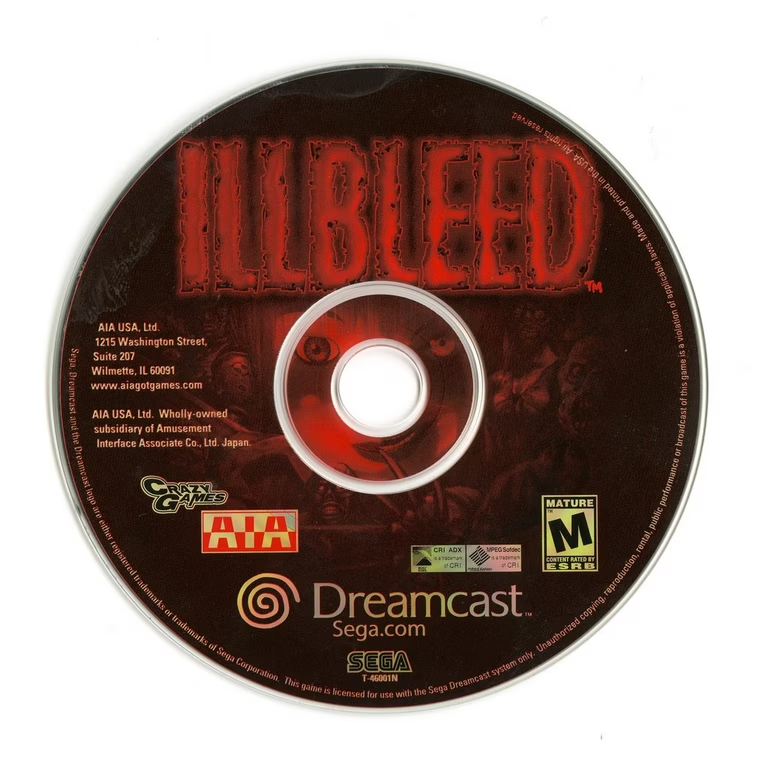
Eriko Christy, a horror fanatic, receives an invitation to the mysterious “Illbleed Horror Land,” an amusement park filled with gruesome attractions. When her friends vanish after entering the park, Eriko ventures inside to find them. What she discovers is a deadly carnival of traps, grotesque monsters, and twisted parodies of horror clichés, where survival depends on her ability to sense danger before it strikes.











Developed by Crazy Games (a subsidiary of Climax Graphics, creators of Blue Stinger) and published by Sega in Japan and AIA in North America, Illbleed was released exclusively for the Sega Dreamcast. Unlike traditional survival horror games, it leaned into grindhouse parody and satirical horror, offering players a tongue-in-cheek but deadly experience. Each of the park’s themed attractions is presented as a gory B-movie scenario, parodying everything from slasher films to creature features. Although criticized at launch for clunky mechanics and poor localization, Illbleed has since earned cult status as one of the Dreamcast’s strangest and most unique horror offering.
Gameplay
The game’s standout feature is its trap detection system, which forces players to monitor Eriko’s four senses sight, hearing, smell, and sixth sense using the Horror Monitor. Success depends less on combat and more on awareness, as hidden traps can cause constant bleeding or even instant death. Players must carefully explore environments, conserve healing items, and manage their character’s stamina and health while facing bizarre enemies and boss fights. Combat exists but is secondary, often clumsy compared to the core survival elements. Each rescued friend becomes playable, offering variety and replay value.
Visuals & Style
Powered by the Dreamcast, Illbleed uses colorful, exaggerated environments that clash with grotesque gore and bizarre monster designs. Each attraction is styled like a low-budget horror film set, complete with exaggerated props, surreal architecture, and over-the-top effects. While technically rough in animation and controls, its bold art direction reinforces its satirical, campy tone, setting it apart from the darker realism of contemporaries like Silent Hill 2.
Importance in Survival Horror History
Illbleed is remembered as one of the most experimental survival horror titles of its era. Its reliance on sensory survival mechanics and parody of horror tropes offered a completely different experience from the psychological or cinematic realism of other 2001 horror releases. While never commercially successful, it helped broaden the scope of what “survival horror” could be showing that the genre could embrace absurdity and satire while still offering tension and challenge. Today, it is celebrated as a cult gem of the Dreamcast library.
Reception & Historical Value
Upon release, critics gave mixed reviews. Some praised its originality, outrageous sense of humor, and sheer creativity, while others criticized its poor controls, uneven pacing, and confusing mechanics. Despite this, the game has grown in reputation over time as an eccentric cult classic, cherished by Dreamcast enthusiasts and horror fans looking for something unconventional. Historically, it remains significant as one of the last major horror exclusives on the Dreamcast and as a symbol of the console’s experimental spirit.
Availability & Collectibility



Illbleed has never been ported or re-released on modern platforms, leaving Dreamcast discs as the only legitimate way to play.
Trailer:
